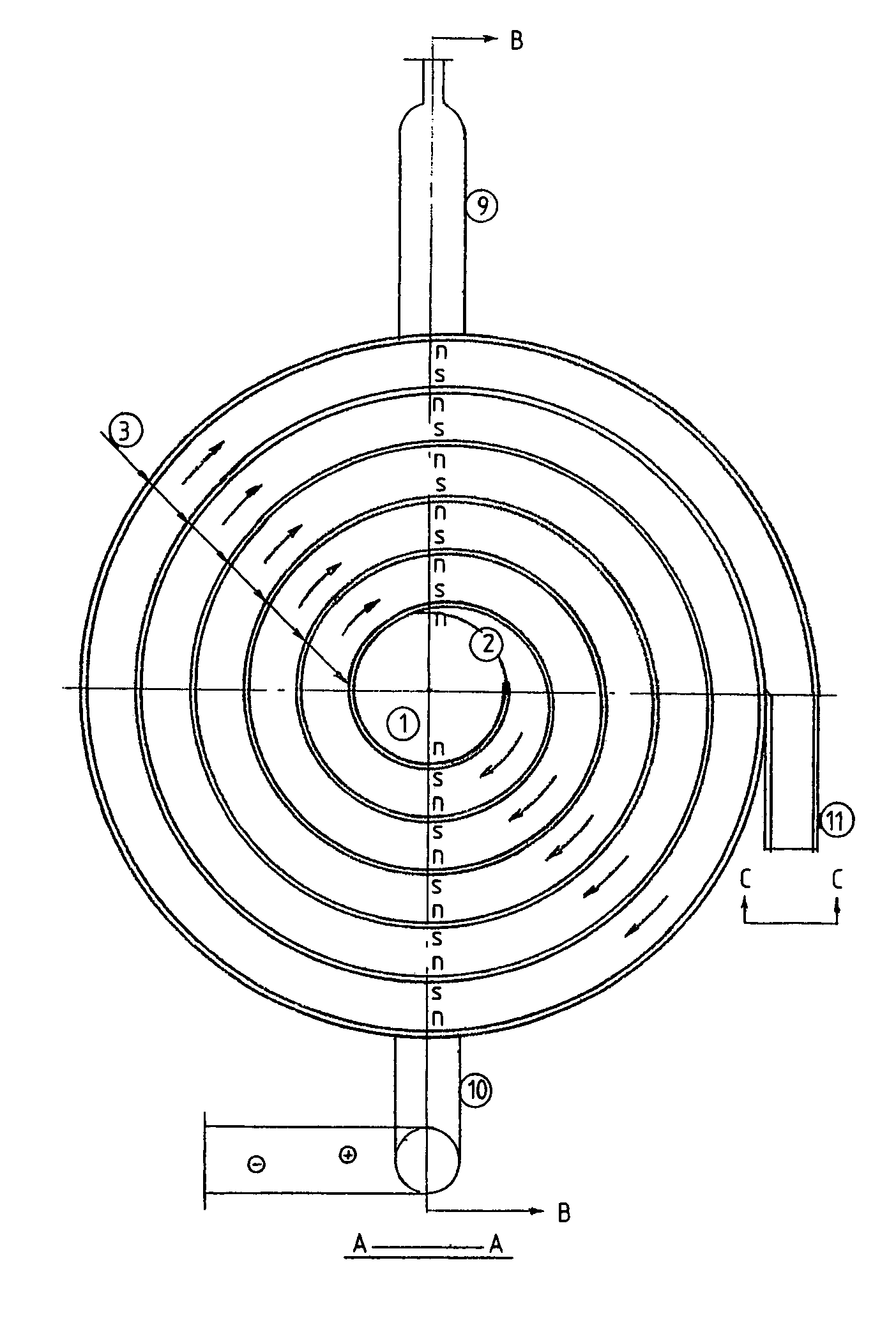Ion separation and removal unit with gas extraction
- Summary
- Abstract
- Description
- Claims
- Application Information
AI Technical Summary
Benefits of technology
Problems solved by technology
Method used
Image
Examples
Embodiment Construction
.
[0012]FIG. 1 and FIG. 2 show the inlets (1) into the spiral conduit with the possibility (from two intakes) to supply the liquid to be treated to the center of the conduit; the spiral center with its outlet (2) into the spiral conduit; the spiral conduit wall (3) provided with magnets along its full length having their magnetic North (n) and South (s) poles in two adjacent conduit flow streams; the spiral open ends (4) with chambers (5) outside, where oppositely charged ions are collected; the electrodes (6) in the chambers to discharge ions with electric connections (7) to short-circuit the electrodes; gas bubbles (8) generated by the ion discharge in the electric circuit; collection bottles (9) in which the gases are collected; outlet pipes (10) of drain solution from the chambers; the spiral conduit outlet (11) with cells, FIG. 3; ions shown in circles with positive and negative charge.
DETAILED DESCRIPTION OF THE INVENTION
[0013]This invention is best exemplified by desalination ...
PUM
| Property | Measurement | Unit |
|---|---|---|
| Power | aaaaa | aaaaa |
| Concentration | aaaaa | aaaaa |
| Magnetic field | aaaaa | aaaaa |
Abstract
Description
Claims
Application Information
 Login to View More
Login to View More - R&D
- Intellectual Property
- Life Sciences
- Materials
- Tech Scout
- Unparalleled Data Quality
- Higher Quality Content
- 60% Fewer Hallucinations
Browse by: Latest US Patents, China's latest patents, Technical Efficacy Thesaurus, Application Domain, Technology Topic, Popular Technical Reports.
© 2025 PatSnap. All rights reserved.Legal|Privacy policy|Modern Slavery Act Transparency Statement|Sitemap|About US| Contact US: help@patsnap.com


